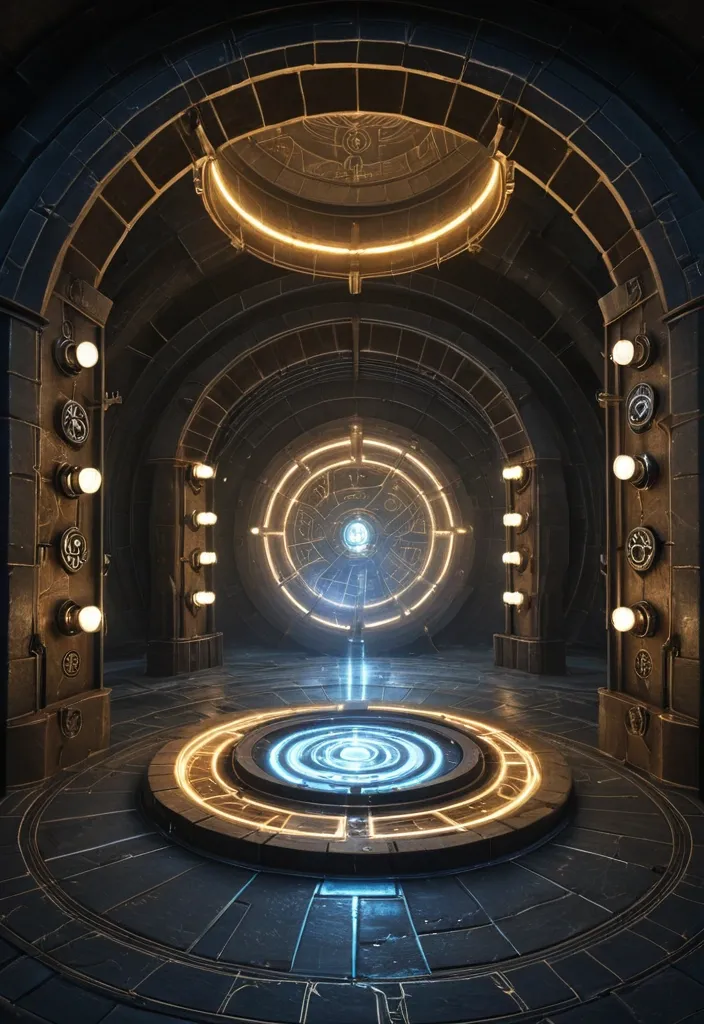Search Results for wide
Explore AI generated designs, images, art and prompts by top community artists and designers.

Shuruppak , early Sumerian city before the Flood , broad mud-brick streets and canals beside the Euphrates , low houses clustered around a rising temple mound , warm haze in late morning , early summer , Style: Matte Painting , detailed and atmospheric with subtle depth of field , Wide view , Side View , 4K. ,

Massilia , Roman Gaul port city on the Mediterranean , marble quays lined with ships and warehouses , hillside villas above bustling markets , sunlight over calm blue bay , late summer afternoon , Style: Matte Painting , detailed and atmospheric with subtle depth of field , Wide view , Side View , 4K. ,

Edo , 17th-century capital of the Tokugawa Shogunate , wooden bridges spanning wide canals , tiled-roof houses and distant castle keep , cherry trees blooming under clear spring sky , midday , Style: Matte Painting , detailed and atmospheric with subtle depth of field , Wide view , Side View , 4K. ,

A female model in a white suit , black shirt , and loose yellow tie lounging on a deep purple sofa in a dimly lit , hazy room. She holds a glowing cigarette to her lips , creating a trail of deep smoke that wafts around her , illuminated by a single beam of light filtering through the smoke. Cinematic quality , low-key setting , ultra-realistic with rich details , captured as a snapshot. Photorealism , shot with a cinematic wide-angle lens , dramatic low-key lighting , high resolution , shallow depth of field. ,

Nile Valley , 2000 BCE , fertile river plain stretching from Delta to Aswan , fields of barley and flax along winding banks , mud-brick villages beneath distant cliffs , midday sun , late summer , Style: Matte Painting , detailed and atmospheric with subtle depth of field , Wide view , Side View , 4K. ,

wide horizontal composition , landscape orientation , cinematic widescreen format , 16:9 aspect ratio , panoramic view , elderly woman with silver braid standing at wooden table , traditional rustic room at night , moonlight through window , candlelight illumination , twelve white candles in ceramic holders , two parallel rows , crystal vase with twenty one eggs , three stacked bread loaves , wooden bowl with poppy seeds , sea salt in ceramic dish , woman reading handwritten book , hand hovering over ritual items , wooden icon on wall , simple wooden chair , textured plaster walls , aged wooden floorboards , doorway perspective view , silvery moonlight path , golden candlelight glow , window frame shadows forming cross pattern , floating dust motes like stars , dark blue woolen dress and shawl , stunning environment , dusk lighting , ultra detailed , intricate detail , volumetric lighting , vivid colours , photorealistic , photography , lifelike , high resolution , digital art , doorway view , interior perspective , wallpaper , wide angle lens , horizontal framing ,

"Illustration: A poignant and evocative scene depicting a slender , graceful vampire in her late 20s to early 30s , standing at a window on a full moon night. Her dark skin is illuminated by the moonlight , highlighting the elegant curve of her neck and the delicate features of her face. Long , dark dreadlocks cascade down her back , partially obscuring her shoulders. Her eyes , naturally reddish in hue , are wide and filled with a deep , unyielding sorrow , though they lack an intense , supernatural glow. Tears , like liquid moonlight , trace paths down her cheeks , reflecting the pain of centuries. She is clad in a short , light garment – perhaps a silk slip or a lace-trimmed chemise – that hints at her sensuality while emphasizing her vulnerability. The room is dimly lit , with shadows dancing across the walls , creating a sense of intimacy and isolation. Outside , the full moon dominates the sky , casting a silvery glow over the cityscape. The scene captures the essence of longing and the weight of immortality , blending beauty with melancholy. The style is dramatic and evocative , with a focus on light and shadow , reminiscent of a graphic novel illustration. The color palette is rich and saturated , with deep blues , purples , and reds dominating , creating a sense of depth and emotion." ,

Artstation , Drawing , Graphite , Charcoal Art , "The singer is a captivating presence , a woman with dark skin , long , intricately styled dark dreadlocks , and striking red eyes – not glowing , but naturally and intensely red – that seem to hold a lifetime of stories. Her features are striking and expressive , capable of conveying a wide range of emotions with subtle shifts in expression. She possesses a natural grace and confidence that commands attention. She is wearing a shimmering , form-fitting dress that accentuates her curves and catches the light with every movement. Large gold hoop earrings dangle from her ears , adding a touch of glamour to her look. Her voice is powerful and soulful , filled with a raw emotion that resonates with the audience. She moves with a natural rhythm and passion , fully immersed in the music. She is a blues siren , a captivating performer who embodies the spirit of the genre." , "He is a handsome man with dark skin , neatly styled dreadlocks , and striking light eyes that stand out in the dimly lit bar. His features are strong and expressive , conveying a sense of quiet strength and warmth. He has a subtle , knowing smile that hints at a shared history with the singer. He is dressed casually but stylishly , perhaps in a well-worn leather jacket or a simple button-down shirt. A glimpse of a tattoo is visible on his arm , adding a touch of intrigue. He carries himself with a relaxed confidence , observing the singer with a mixture of admiration , affection , and perhaps a hint of melancholy. He is a supportive presence , a silent observer who understands the depths of her soul." , "Music Video Illustration: A dimly lit , crowded blues bar pulsates with energy. On a small stage , a woman with dark skin , long dark dreadlocks , and naturally red eyes sings with soulful passion into a vintage microphone. She wears a glittering dress that catches the light , and her expression is one of controlled sadness , a deep well of emotion held just beneath the surface. Across the room , partially obscured by the throng of patrons , a handsome man with dark skin , dreadlocks , and striking light eyes watches her with a warm , knowing smile. He leans against the bar , a drink in hand , his gaze fixed on her. The bar is packed with people , a mix of faces and styles , all bathed in the warm glow of the stage lights and the flickering neon signs. Instruments gleam in the background , and smoke hangs in the air. The style is gritty and realistic , with a touch of artistic flair. The color palette is rich and warm , with deep blues , reds , and golds dominating. The overall mood should evoke a sense of nostalgia , longing , and the intoxicating atmosphere of a classic blues club. This illustration is intended to be part of a music video , so consider dynamic composition and visual storytelling , emphasizing the singer's controlled sadness and the man's knowing gaze." ,

Artstation , Drawing , Graphite , Charcoal Art , "The singer is a captivating presence , a woman with dark skin , long , intricately styled dark dreadlocks , and striking red eyes – not glowing , but naturally and intensely red – that seem to hold a lifetime of stories. Her features are striking and expressive , capable of conveying a wide range of emotions with subtle shifts in expression. She possesses a natural grace and confidence that commands attention. She is wearing a shimmering , form-fitting dress that accentuates her curves and catches the light with every movement. Large gold hoop earrings dangle from her ears , adding a touch of glamour to her look. Her voice is powerful and soulful , filled with a raw emotion that resonates with the audience. She moves with a natural rhythm and passion , fully immersed in the music. She is a blues siren , a captivating performer who embodies the spirit of the genre." , "He is a handsome man with dark skin , neatly styled dreadlocks , and striking light eyes that stand out in the dimly lit bar. His features are strong and expressive , conveying a sense of quiet strength and warmth. He has a subtle , knowing smile that hints at a shared history with the singer. He is dressed casually but stylishly , perhaps in a well-worn leather jacket or a simple button-down shirt. A glimpse of a tattoo is visible on his arm , adding a touch of intrigue. He carries himself with a relaxed confidence , observing the singer with a mixture of admiration , affection , and perhaps a hint of melancholy. He is a supportive presence , a silent observer who understands the depths of her soul." , "Music Video Illustration: A dimly lit , crowded blues bar pulsates with energy. On a small stage , a woman with dark skin , long dark dreadlocks , and naturally red eyes sings with soulful passion into a vintage microphone. She wears a glittering dress that catches the light , and her expression is one of controlled sadness , a deep well of emotion held just beneath the surface. Across the room , partially obscured by the throng of patrons , a handsome man with dark skin , dreadlocks , and striking light eyes watches her with a warm , knowing smile. He leans against the bar , a drink in hand , his gaze fixed on her. The bar is packed with people , a mix of faces and styles , all bathed in the warm glow of the stage lights and the flickering neon signs. Instruments gleam in the background , and smoke hangs in the air. The style is gritty and realistic , with a touch of artistic flair. The color palette is rich and warm , with deep blues , reds , and golds dominating. The overall mood should evoke a sense of nostalgia , longing , and the intoxicating atmosphere of a classic blues club. This illustration is intended to be part of a music video , so consider dynamic composition and visual storytelling , emphasizing the singer's controlled sadness and the man's knowing gaze." ,

Artstation , Drawing , Graphite , Charcoal Art , "The singer is a captivating presence , a woman with dark skin , long , intricately styled dark dreadlocks , and striking red eyes – not glowing , but naturally and intensely red – that seem to hold a lifetime of stories. Her features are striking and expressive , capable of conveying a wide range of emotions with subtle shifts in expression. She possesses a natural grace and confidence that commands attention. She is wearing a shimmering , form-fitting dress that accentuates her curves and catches the light with every movement. Large gold hoop earrings dangle from her ears , adding a touch of glamour to her look. Her voice is powerful and soulful , filled with a raw emotion that resonates with the audience. She moves with a natural rhythm and passion , fully immersed in the music. She is a blues siren , a captivating performer who embodies the spirit of the genre." , "He is a handsome man with dark skin , neatly styled dreadlocks , and striking light eyes that stand out in the dimly lit bar. His features are strong and expressive , conveying a sense of quiet strength and warmth. He has a subtle , knowing smile that hints at a shared history with the singer. He is dressed casually but stylishly , perhaps in a well-worn leather jacket or a simple button-down shirt. A glimpse of a tattoo is visible on his arm , adding a touch of intrigue. He carries himself with a relaxed confidence , observing the singer with a mixture of admiration , affection , and perhaps a hint of melancholy. He is a supportive presence , a silent observer who understands the depths of her soul." , "Music Video Illustration: A dimly lit , crowded blues bar pulsates with energy. On a small stage , a woman with dark skin , long dark dreadlocks , and naturally red eyes sings with soulful passion into a vintage microphone. She wears a glittering dress that catches the light , and her expression is one of controlled sadness , a deep well of emotion held just beneath the surface. Across the room , partially obscured by the throng of patrons , a handsome man with dark skin , dreadlocks , and striking light eyes watches her with a warm , knowing smile. He leans against the bar , a drink in hand , his gaze fixed on her. The bar is packed with people , a mix of faces and styles , all bathed in the warm glow of the stage lights and the flickering neon signs. Instruments gleam in the background , and smoke hangs in the air. The style is gritty and realistic , with a touch of artistic flair. The color palette is rich and warm , with deep blues , reds , and golds dominating. The overall mood should evoke a sense of nostalgia , longing , and the intoxicating atmosphere of a classic blues club. This illustration is intended to be part of a music video , so consider dynamic composition and visual storytelling , emphasizing the singer's controlled sadness and the man's knowing gaze." ,

Artstation , Drawing , Graphite , Charcoal Art , "Music Video Illustration: A dimly lit , crowded blues bar pulsates with energy. On a small stage , a woman with dark skin , long dark dreadlocks , and piercing red eyes sings with soulful passion into a vintage microphone. She wears a glittering dress that catches the light , and her expression is a captivating blend of vulnerability and power. Across the room , partially obscured by the throng of patrons , a handsome man with dark skin , dreadlocks , and striking light eyes watches her with a warm , knowing smile. He leans against the bar , a drink in hand , his gaze fixed on her. The bar is packed with people , a mix of faces and styles , all bathed in the warm glow of the stage lights and the flickering neon signs. Instruments gleam in the background , and smoke hangs in the air. The style is gritty and realistic , with a touch of artistic flair. The color palette is rich and warm , with deep blues , reds , and golds dominating. The overall mood should evoke a sense of nostalgia , longing , and the intoxicating atmosphere of a classic blues club. This illustration is intended to be part of a music video , so consider dynamic composition and visual storytelling." , "The singer is a captivating presence , a woman with dark skin , long , intricately styled dark dreadlocks , and striking red eyes – not glowing , but naturally and intensely red – that seem to hold a lifetime of stories. Her features are striking and expressive , capable of conveying a wide range of emotions with subtle shifts in expression. She possesses a natural grace and confidence that commands attention. She is wearing a shimmering , form-fitting dress that accentuates her curves and catches the light with every movement. Large gold hoop earrings dangle from her ears , adding a touch of glamour to her look. Her voice is powerful and soulful , filled with a raw emotion that resonates with the audience. She moves with a natural rhythm and passion , fully immersed in the music. She is a blues siren , a captivating performer who embodies the spirit of the genre." , "He is a handsome man with dark skin , neatly styled dreadlocks , and striking light eyes that stand out in the dimly lit bar. His features are strong and expressive , conveying a sense of quiet strength and warmth. He has a subtle , knowing smile that hints at a shared history with the singer. He is dressed casually but stylishly , perhaps in a well-worn leather jacket or a simple button-down shirt. A glimpse of a tattoo is visible on his arm , adding a touch of intrigue. He carries himself with a relaxed confidence , observing the singer with a mixture of admiration , affection , and perhaps a hint of melancholy. He is a supportive presence , a silent observer who understands the depths of her soul." ,

Artstation , Drawing , Graphite , Charcoal Art , "Music Video Illustration: A dimly lit , crowded blues bar pulsates with energy. On a small stage , a woman with dark skin , long dark dreadlocks , and piercing red eyes sings with soulful passion into a vintage microphone. She wears a glittering dress that catches the light , and her expression is a captivating blend of vulnerability and power. Across the room , partially obscured by the throng of patrons , a handsome man with dark skin , dreadlocks , and striking light eyes watches her with a warm , knowing smile. He leans against the bar , a drink in hand , his gaze fixed on her. The bar is packed with people , a mix of faces and styles , all bathed in the warm glow of the stage lights and the flickering neon signs. Instruments gleam in the background , and smoke hangs in the air. The style is gritty and realistic , with a touch of artistic flair. The color palette is rich and warm , with deep blues , reds , and golds dominating. The overall mood should evoke a sense of nostalgia , longing , and the intoxicating atmosphere of a classic blues club. This illustration is intended to be part of a music video , so consider dynamic composition and visual storytelling." , "The singer is a captivating presence , a woman with dark skin , long , intricately styled dark dreadlocks , and striking red eyes – not glowing , but naturally and intensely red – that seem to hold a lifetime of stories. Her features are striking and expressive , capable of conveying a wide range of emotions with subtle shifts in expression. She possesses a natural grace and confidence that commands attention. She is wearing a shimmering , form-fitting dress that accentuates her curves and catches the light with every movement. Large gold hoop earrings dangle from her ears , adding a touch of glamour to her look. Her voice is powerful and soulful , filled with a raw emotion that resonates with the audience. She moves with a natural rhythm and passion , fully immersed in the music. She is a blues siren , a captivating performer who embodies the spirit of the genre." , "He is a handsome man with dark skin , neatly styled dreadlocks , and striking light eyes that stand out in the dimly lit bar. His features are strong and expressive , conveying a sense of quiet strength and warmth. He has a subtle , knowing smile that hints at a shared history with the singer. He is dressed casually but stylishly , perhaps in a well-worn leather jacket or a simple button-down shirt. A glimpse of a tattoo is visible on his arm , adding a touch of intrigue. He carries himself with a relaxed confidence , observing the singer with a mixture of admiration , affection , and perhaps a hint of melancholy. He is a supportive presence , a silent observer who understands the depths of her soul." ,

Artstation , Drawing , Graphite , Charcoal Art , "Music Video Illustration: A dimly lit , crowded blues bar pulsates with energy. On a small stage , a woman with dark skin , long dark dreadlocks , and piercing red eyes sings with soulful passion into a vintage microphone. She wears a glittering dress that catches the light , and her expression is a captivating blend of vulnerability and power. Across the room , partially obscured by the throng of patrons , a handsome man with dark skin , dreadlocks , and striking light eyes watches her with a warm , knowing smile. He leans against the bar , a drink in hand , his gaze fixed on her. The bar is packed with people , a mix of faces and styles , all bathed in the warm glow of the stage lights and the flickering neon signs. Instruments gleam in the background , and smoke hangs in the air. The style is gritty and realistic , with a touch of artistic flair. The color palette is rich and warm , with deep blues , reds , and golds dominating. The overall mood should evoke a sense of nostalgia , longing , and the intoxicating atmosphere of a classic blues club. This illustration is intended to be part of a music video , so consider dynamic composition and visual storytelling." , "The singer is a captivating presence , a woman with dark skin , long , intricately styled dark dreadlocks , and striking red eyes – not glowing , but naturally and intensely red – that seem to hold a lifetime of stories. Her features are striking and expressive , capable of conveying a wide range of emotions with subtle shifts in expression. She possesses a natural grace and confidence that commands attention. She is wearing a shimmering , form-fitting dress that accentuates her curves and catches the light with every movement. Large gold hoop earrings dangle from her ears , adding a touch of glamour to her look. Her voice is powerful and soulful , filled with a raw emotion that resonates with the audience. She moves with a natural rhythm and passion , fully immersed in the music. She is a blues siren , a captivating performer who embodies the spirit of the genre." , "He is a handsome man with dark skin , neatly styled dreadlocks , and striking light eyes that stand out in the dimly lit bar. His features are strong and expressive , conveying a sense of quiet strength and warmth. He has a subtle , knowing smile that hints at a shared history with the singer. He is dressed casually but stylishly , perhaps in a well-worn leather jacket or a simple button-down shirt. A glimpse of a tattoo is visible on his arm , adding a touch of intrigue. He carries himself with a relaxed confidence , observing the singer with a mixture of admiration , affection , and perhaps a hint of melancholy. He is a supportive presence , a silent observer who understands the depths of her soul." ,

Whole body of a beautiful woman action figure. 9:16 ratio. Woman , slim , beautiful , large eyes , brown eyes , Whole body , mid-wide face , big nose , thick lips , hair , chestnut , seeds , , hair largo , staring straight into the camera , with tight red sports shorts , white bra top , , white tennis shoes , de Whole body , standing , with hands on waist , happy soft smile.She is a premium collectible toy style. The woman doll should be standing and face forward. The package should have a header with the phrase 'Olivian' in large print. The accessories in the next compartment to the figure are a cream knit bra top , a vintage handbag , and a luxurious mobile phone. ,

A wide circular chamber adjoining the Research Deck , its floor etched with an immense sigil array that hums faintly like a tuned instrument. Brass rails divide the space into three concentric rings — the outer walk , the channel ring where energy flows like liquid light , and the core dais used for arrivals. At the edge , a levitating carriage-like craft rests on suspended anchors: the party’s teleportation car — an elongated , rune-lined vehicle shaped from dark steel and crystal fins , capable of phase travel across ley points. Crates of spare mana cells , coils of conduits , and half-assembled parts clutter the perimeter , with Orwen’s technicians adjusting frequency regulators from control consoles built into the wall. High windows open to the Trielta skyline , and every teleport pulse briefly projects ghostly afterimages of distant locations. Lighting: cold white-blue from runes below , mixed with warm copper ambient glow. Sound: steady hum , faint oscillating resonance , distant city bells. Mood: precise , mechanical calm — Trielta’s heartbeat under control. ,

A fortified circular hall deep within the clocktower’s core , designed for testing and tempering magical artifacts. The walls are lined with engraved runic plates and pivoting bronze mirrors , each capable of redirecting spell energy. A reinforced obsidian floor etched with concentric containment rings marks the testing area’s center. Suspended sigil projectors hover above like chandeliers , forming shifting shields of light when activated. Training dummies made of wood , steel , and enchanted clay stand ready , some half-shattered from previous trials. Along the far wall , a rack of prototype weapons and spell-foci glimmers under torchlight — Orwen’s unfinished experiments. When spells are cast here , energy disperses through glowing conduits in the ceiling , absorbed by humming arcane capacitors. Lighting: high-contrast gold and blue , faint sparks in the air. Camera: wide shot from the balcony overlooking the testing circle. Style: semi-realistic fantasy artwork , metallic gleam , dynamic tension , warm-meets-cool light palette. ,

Mohenjo-daro , Indus Valley Civilization city , grid of baked brick streets and courtyards beside the Indus River , stepped well and granary under hazy sun , palm trees at the edge , dry season midday , Style: hyperrealistic with a painterly texture , reminiscent of historical reconstruction art , detailed and atmospheric with subtle depth of field , Wide view , Side View , 4K. ,

Arcane laboratory and meeting chamber inside the upper levels of the clocktower. Central feature: the Resonator Table , a large circular platform etched with glowing runes and three radiant discs (red , blue , silver). Surrounding it: floating quills , suspended crystal instruments , scroll racks , and a ring of arcane projectors casting sigils into the air. Iron walkways and rails overlook the lower levels; the city skyline visible through glass arches. Subtle steampunk details — coils , wires , rune conduits. Lighting: cool white glow mixed with candlelight , magical aura highlights faces. Camera: wide shot from stair entrance , capturing the table and upper gantries. Style: cinematic , semi-realistic fantasy art with precise metallic reflections. ,

A vast , multi-level fantasy clocktower interior repurposed as an adventurers’ headquarters. The space blends arcane laboratory , guild hall , and observatory. Architecture: black iron and brass , exposed gears , suspended bridges , glass floors revealing moving mechanisms below. Lighting: warm golden light from levitating crystal lamps and runic sconces. Soft daylight filters from tall stained-glass windows depicting celestial symbols and eight moons. Central feature: a large round table engraved with arcane runes — the Resonator Table , glowing faintly with three colored discs (red , blue , silver). Background details: parchment-cluttered desks , floating quills , a mechanical elevator cage , and Butler (a distinguished man in waistcoat) greeting adventurers. Upper balconies lined with books , hanging instruments , and a rotating crystal lens far above (the Eye of Hours). Mood: warm , industrious , mysterious; like a fusion of dwarven engineering and elven magic. Style: semi-realistic digital painting , cinematic lighting , richly detailed textures , slightly steampunk fantasy aesthetic. Camera: wide-angle interior shot from ground level looking up , emphasizing the tower’s height and golden glow. ,

Rural 3D cinematic style wide shot framed for 16:9 video format , set in a snow-covered pine forest glowing with warm golden light of the setting sun. In the foreground , the 8-year-old boy wearing a yellow jacket and black pants sits quietly on the snow , looking toward the forest , as two small grey wolf cubs stand beside him , their fur softly moving in the cold breeze. In the distance , the mother wolf steps halfway out from behind frosted trees — her eyes gentle , full of emotion , as she looks at the boy for a brief moment before turning toward the woods. The sunlight creates a magical glow around her fur , snow sparkles softly on the ground , and a gentle mist drifts between trees. Mood emotional , peaceful , and cinematic; a moment of connection and farewell captured in natural rural 3D style with detailed snow , fur texture , and realistic depth of field. Composition balanced with warm and cool tones , framed for 16:9 cinematic storytelling. ,

Valletta , 16th-century fortified capital of the Knights of Malta , massive limestone bastions overlooking a deep blue harbor , sunlight glinting on ramparts and domes , midsummer afternoon , Style: hyperrealistic with a painterly texture , reminiscent of historical reconstruction art , detailed and atmospheric with subtle depth of field , Wide view , Side View , 4K. ,

A realistic image of a extremely muscular bodybuilder woman with massive huge hypertrophied and pumped muscles , hyper thick muscular thighs , huge pumped biceps , large wide muscular shoulders , muscular traps , thick muscular forearms with bulging veins , sitting on a living room sofa next to a thin man. Emphasize the body size difference between the two , both laughing and enjoying the moment. the woman has a beautiful face , caucasian , long blond hair , far skin with bulging veins on the massive hypertrophied muscles , wearing a small denim shorts and slip crop_top , she is flexing huge biceps in front of him ,

descends the private jet stairs with effortless poise , long waves catching the breeze as runway lights glow behind her , highlighting the drama of the moment. Luxury and elegance radiate from every detail of the scene. Hair: Long , effortless yet polished waves , softly lifted by wind. Subtle movement and layered highlights enhance realism , with strands gently framing the face. Outfit: Floor-length black blouse with golden embroidery paired with a flowing white lehenga richly decorated with golden designs with a thigh-high slit , smiling gracefully while holding colorful dandiya sticks , adorned with dripping Cartier diamonds. white lehenga flows naturally , catching runway and jet lights , showing subtle folds , sheen , and texture. Props/Textures: Oversized designer sunglasses reflecting ambient light , vintage Louis Vuitton travel trunk at the side. Runway lights and jet stairs polished , reflecting softly onto fabric and jewelry. Skin & Face Texture: Ultra-realistic cinematic detail. Visible pores , natural highlights along cheekbones , nose , collarbones , and shoulders from spotlight and runway reflections. Lips soft satin sheen; eyes sharp beneath designer sunglasses reflecting subtle light. Micro-expression conveys effortless confidence. Camera & Lens: Canon EOS R5 , wide-angle lens. Wide cinematic framing emphasizing her full figure , white lehenga flow , and the stairs with runway lights. Angle: Slight low-angle to accentuate presence , luxury , and upward motion from stairs , capturing both movement of gown and sparkling diamonds. Lighting: Spotlights combined with ambient jet and runway lights. Highlights sculpt skin , gown , and diamonds while shadows add cinematic depth. Vibe: Grandiose , high-fashion luxury — cinematic editorial capturing the moment of stepping into ultimate glamour and sophistication. ,

Porticus Aemilia , Rome 200 CE , vast covered walkway of brick arches stretching along the Tiber , merchants and carts beneath vaulted bays , sunlight filtering through dust , late afternoon , early autumn , Style: hyperrealistic with a painterly texture , reminiscent of historical reconstruction art , detailed and atmospheric with subtle depth of field , Wide view , Side View , 4K. ,

Baiae , Bay of Naples 200 CE , Roman seaside resort with marble villas and terraces above blue water , steam rising from hot springs , sailboats offshore under warm sunlight , late summer morning , Style: hyperrealistic with a painterly texture , reminiscent of historical reconstruction art , detailed and atmospheric with subtle depth of field , Wide view , Side View , 4K. ,




